|
Thursday, December 18, 2014
|


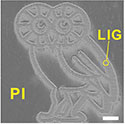
|
Researchers at Rice University say their one-step CO2 laser-induced graphene (LIG) process could enable rapid, roll-to-roll manufacturing of nanoelectronics.
|
|
|
|

|

Emcore Announces Leadership Changes, Sheds Solar and Telecom Segments
The first quarter of Emcore’s fiscal 2015 ends Dec. 31, with a company-predicted net loss of $1 to $2 million. The company projects that revenues from its remaining broadband fiber optics business will be in the range of $17 million to $19 million; that segment generated $14.3 million in revenue in the fourth quarter.
|
|
|
|

Laser Method Approved to Test Bread Volume
Developed by Perten Instruments of Stockholm, the bread volume measurement (BVM) method was assessed by a collaborative study conducted by the American Association of Cereal Chemists International.
|
|
|
|



|
New Shaped Tip
Fiber Assemblies
Fiberguide Industries
The new shaped tip fibers are created using Fiberguide’s proprietary design software and fiber processing techniques. The tips allow customers to shape the outbeam beam and/or increase the efficiency of light collection.
More info >>
|
|

|

|
Ultra-Flat Dichroic & Polychroic Filters
Alluxa
Alluxa is pleased to announce ultra-flat dichroic and polychroic filters with very high levels of in band transmission. Typical uses for ultra-flat, thin dichroics are in imaging and laser based applications.
More info >>
|
|

|

|
Necsel Green Laser
Necsel
Necsel holds key patented technology to be the only worldwide provider of high power red, green and blue lasers with price points that enable the targeted display and lighting markets.
More info >>
|
|

|
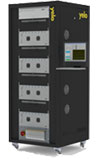
|
Laser Diode Test System
YELO
The Y1000L is a universal tester capable of burn-in aging and life-time testing of multiple photonic devices at the same time. This means any photonic device, any package style and using any test recipe.
More info >>
|
|


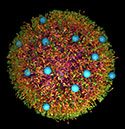
|
Dye-coated nanoparticles that have been shown to interfere with cholesterol production could go on to find clinical use, particularly in cases of acute septic infection.
|
|
|
|


Smaller, Faster Lidar Could Map Seafloor from Aerial Drones
“In our laboratory tests, we’re computing about 37 million points per second — which is exceptionally fast for a lidar system and gives us a great deal of information about the sea floor in a very short period of time,” said principal research scientist Dr. Grady Tuell of the Georgia Tech Research Institute.
|
|
|
|

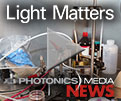
|
In this edition of the industry's premier weekly newscast: we show you how lasers can transform cheap plastic film into a versatile kind of graphene. Other stories explore 3-D nanopatterning, spray-on solar cells and disease-targeting dyes. We also introduce you to the finalists for this year’s Prism Award in biomedical instrumentation.
|
|
|

‘Smart’ Windows Block Heat, Not Light
Developed by researchers from several Chinese institutions, the windows turn an opaque white in response to external heat; this prevents heat from entering while still allowing light through. The windows become transparent again as temperatures drop.
|
|
|
|


|
“OPALS has shown that space-to-ground laser communications transmissions are practical and repeatable,” said Matthew Abrahamson, mission manager at NASA’s Jet Propulsion Laboratory. “As a bonus, OPALS has collected an enormous amount of data to advance the science of sending lasers through the atmosphere.”
|
|
|
|


WHITE PAPER

|
The Benefits of Modern CMOS Sensors in Industrial Line Scan Cameras
Basler AG
As sensor technology has improved in leaps and bounds, the old rule of thumb familiar to many line scan camera users has lost much of its punch. The idea that CCD = high image quality while CMOS = speed is only true anymore under very limited circumstances, since the preconception inaccurately reflects the current performance levels offered by modern CMOS sensors for industrial camera use. This white paper provides an overview of the latest developments in CMOS sensor technology and is intended to highlight the importance of these improvements when considering the use of CMOS sensors in line scan camera applications.
DOWNLOAD WHITE PAPER >>
|
|
|


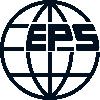
|
The European Physical Society's NanoMeta 2015 aims to bring together the international nanotechnology, photonics and materials research communities to discuss their most recent and challenging results in an informal setting.
The technical programme will include invited and selected contributed papers in the areas of: metamaterials and metadevices; nanophotonics and nanobiophotonics; plasmonics and plasmo-electronic devices; nanophotonic, hybrid and quantum materials; localization of light and optical super-resolution.
The conference will be organized in two oral parallel sessions (nanophotonics and metamaterials) and will feature joint plenary, tutorial and post-deadline sessions. The conference timetable will be arranged in a way that permits mid-day breaks for recreational activities and informal contact between participants.
More info >>
|
|


|

|
|
What were the biggest photonics stories of 2014? You tell us! Email us your nominations at [email protected], or tweet us using the hashtag #photonics2014. We’d love to have your input for the Dec. 31 episode of Light Matters, where we’ll present a roundup of the year’s most exciting research and industry news.
|
|
|
|
FEATURED VIDEO
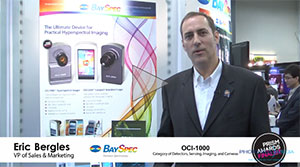
BaySpec – Handheld Hyperspectral Imager
Eric Bergles, Vice President of Sales and Marketing at Bayspec, talks about the Prism nominated OCI-1000. BaySpec has developed a highly-integrated spectral imager that provides a detailed view of the spectrum for every point in an image. Eventually, small handhelds could be adapted for use in outpatient medical clinics to check our skin for melanoma or other illnesses.
|
|
|

sponsor
 |

sponsor
 |


sponsor
 |

sponsor
 |

sponsor
 |

sponsor
 |

|